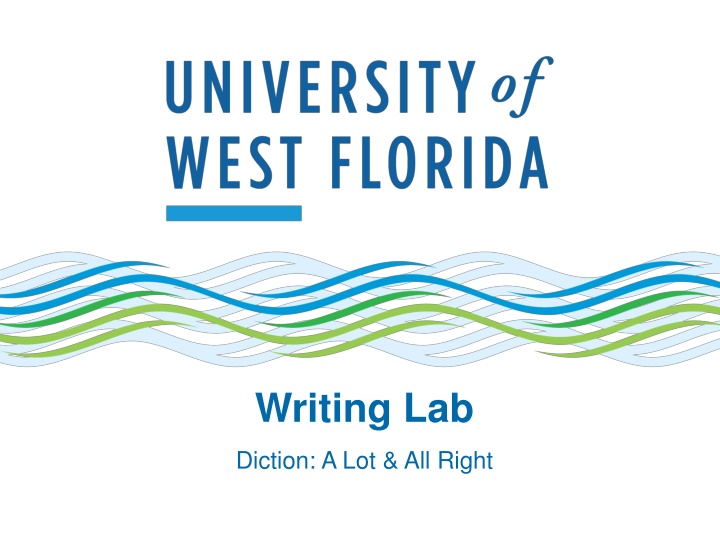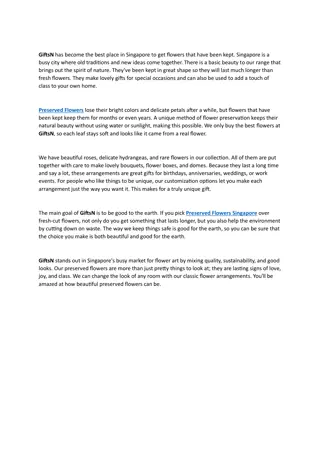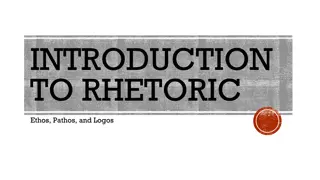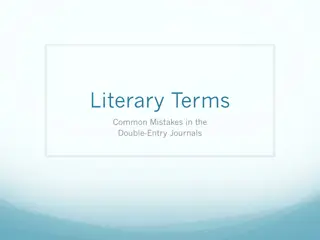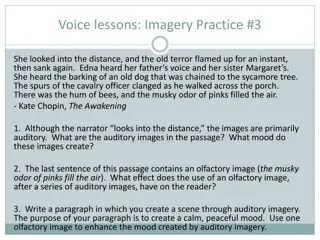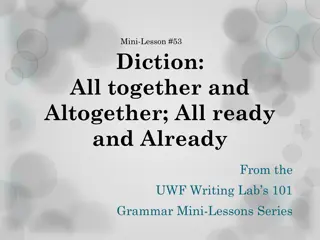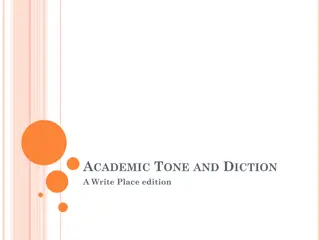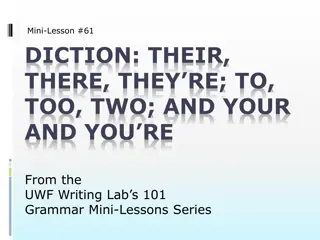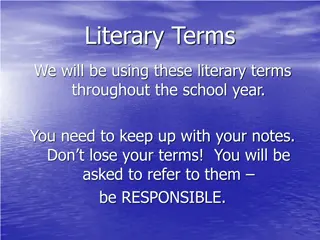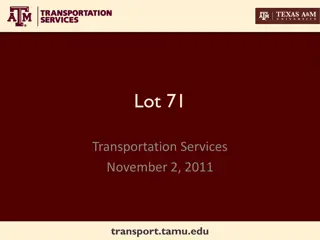Mastering Diction: A Lot vs. Alot and All Right
Understand the nuances of diction with a focus on common errors like "a lot" vs. "alot" and "all right" vs. "alright." Dive into the correct usage of these terms, learn informal vs. formal language distinctions, and challenge your understanding with practice exercises.
Download Presentation

Please find below an Image/Link to download the presentation.
The content on the website is provided AS IS for your information and personal use only. It may not be sold, licensed, or shared on other websites without obtaining consent from the author.If you encounter any issues during the download, it is possible that the publisher has removed the file from their server.
You are allowed to download the files provided on this website for personal or commercial use, subject to the condition that they are used lawfully. All files are the property of their respective owners.
The content on the website is provided AS IS for your information and personal use only. It may not be sold, licensed, or shared on other websites without obtaining consent from the author.
E N D
Presentation Transcript
Writing Lab Diction: A Lot & All Right
A Lot vs. Alot Despite the popular misspelling, a lot is always two words. The preferred usage is to substitute a lot for several or many. Careful writers of standard English avoid the use of a lot altogether.
A Lot vs. Alot cont. INFORMAL: A lot of words in the English language are used interchangeably. FORMAL: Many words in the English language are used interchangeably.
All Right vs. Alright The only acceptable spelling is all right two l s and two words.
All Right vs. Alright cont. Everything seemed all right (not alright) until the argument began. One of my favorite songs from the sixties is It s All Right by the Impressions.
Lets Practice! Sam has (a lot/alot) of time on his hands. Jim says he feels (alright/all right). Sara thinks a lot/many people are bad drivers.
Answers Sam has a lot of time on his hands. Jim says he feels all right. Sara thinks many people are bad drivers.
Thats all, folks! This lesson is part of the UWF Writing Lab Grammar Mini-Lesson Series Lessons adapted from Real Good Grammar, Too by Mamie Webb Hixon To find out more, visit the Writing Lab s website where you can take a self-scoring quiz corresponding to this lesson
